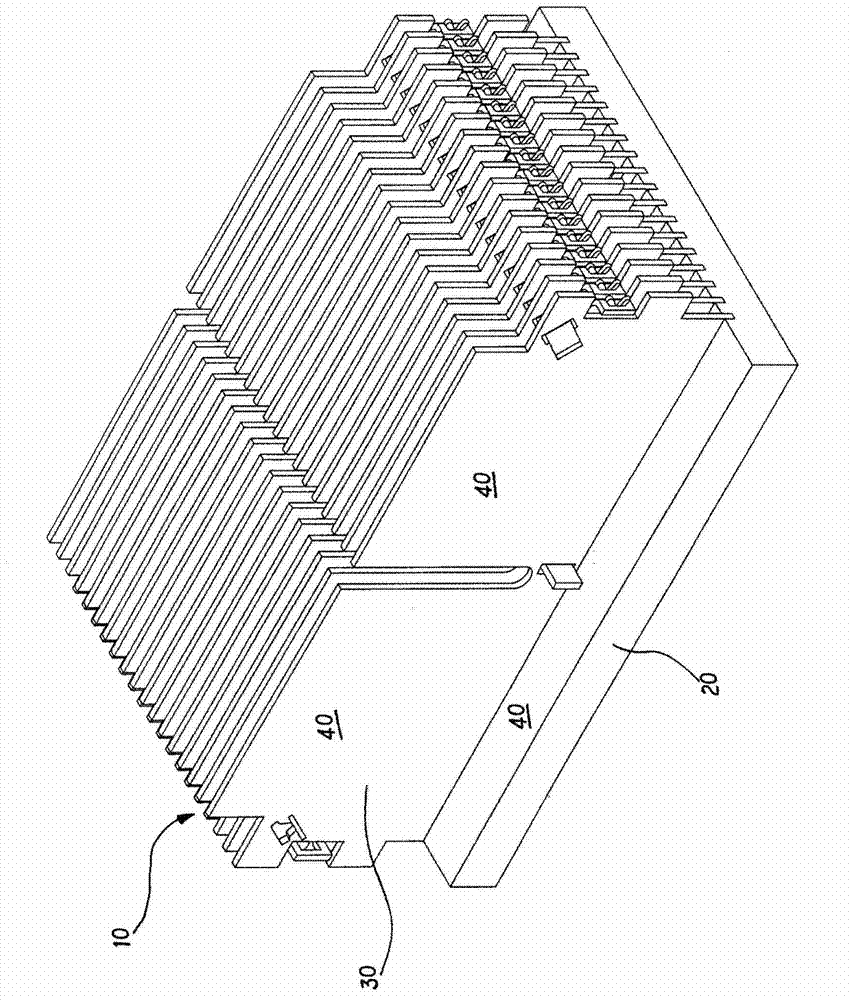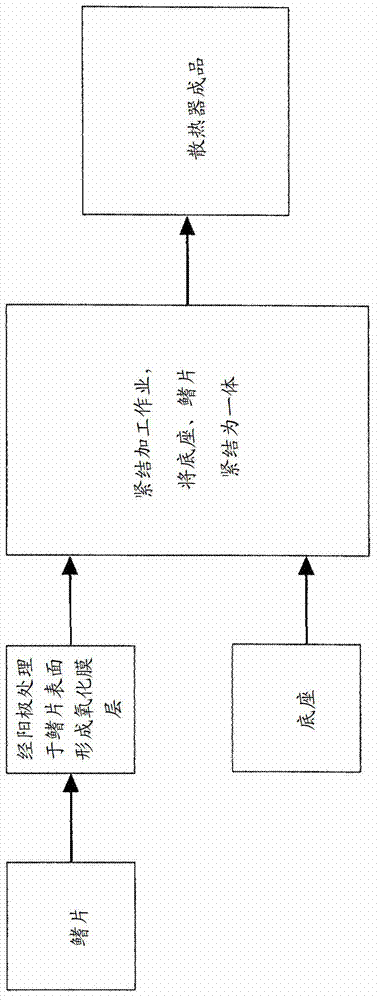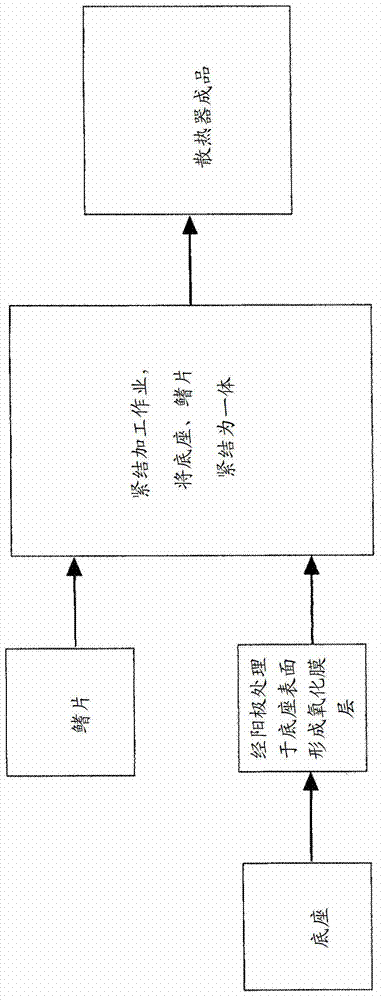Manufacturing method of high heat transfer efficiency radiators
A heat sink, high-efficiency technology, applied in the direction of cooling/ventilation/heating transformation, anodizing, etc., can solve the problems of unsatisfactory heat dissipation performance, high cost, temperature rise effect of computer or electronic components, etc.
- Summary
- Abstract
- Description
- Claims
- Application Information
AI Technical Summary
Problems solved by technology
Method used
Image
Examples
Embodiment Construction
[0023] A method for making a high heat transfer efficiency radiator of the present invention, please refer to figure 1 As shown, the composition of the heat sink 10 includes a base 20. The base 20 can be rectangular, circular, geometric or irregular in shape and one side is attached to a heat source (not shown in the figure). The heat source includes but is not limited to an integrated circuit , chip or light-emitting diode module, the other side of the base 20 is combined with a plurality of fins 30, and the combination method can be welding, riveting, stamping or gluing with heat pipes, so that the fins 30 and the base 20 are closely integrated, and the heat source generates The heat is conducted to the fins 30 through the base 20 to dissipate heat;
[0024] According to Stefan-Boltzman Law (Stefan-Boltzman Law), it shows that at the absolute temperature T, the total radiation rate emitted from a black body (Black body) is Qb=AσT 4 , where A is the axonal area, and σ is the...
PUM
 Login to View More
Login to View More Abstract
Description
Claims
Application Information
 Login to View More
Login to View More - R&D
- Intellectual Property
- Life Sciences
- Materials
- Tech Scout
- Unparalleled Data Quality
- Higher Quality Content
- 60% Fewer Hallucinations
Browse by: Latest US Patents, China's latest patents, Technical Efficacy Thesaurus, Application Domain, Technology Topic, Popular Technical Reports.
© 2025 PatSnap. All rights reserved.Legal|Privacy policy|Modern Slavery Act Transparency Statement|Sitemap|About US| Contact US: help@patsnap.com



